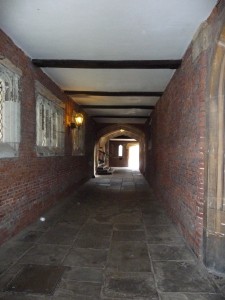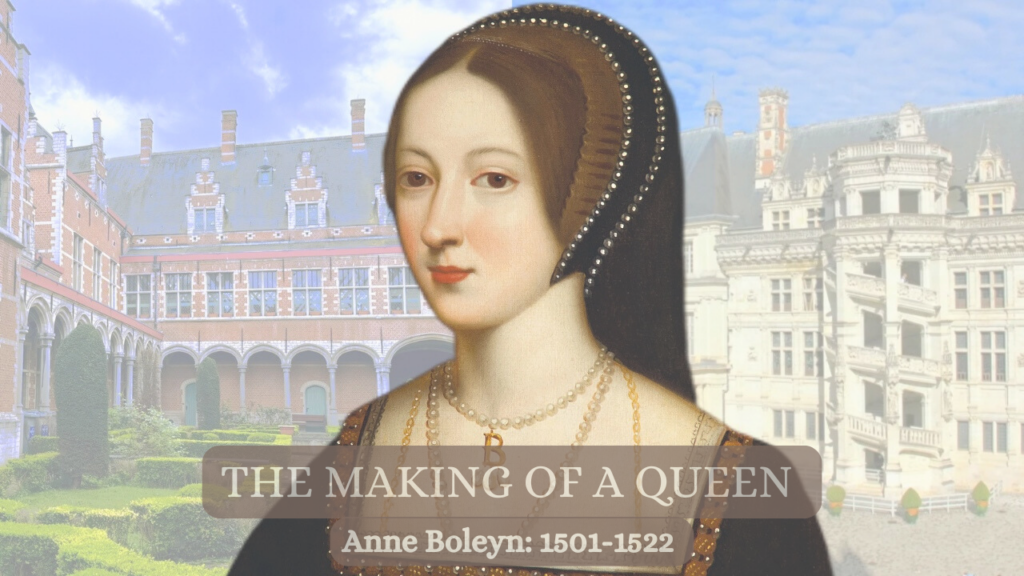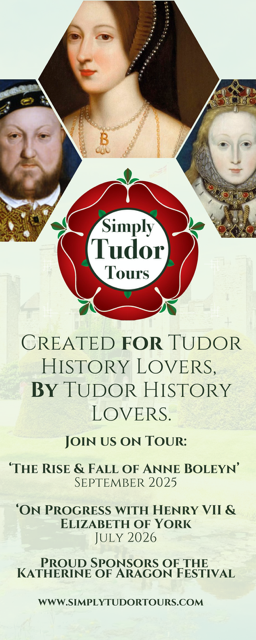The Interior walls of Tudor palaces were either brick or stud partitions (Pg. 207). In both cases they were plastered with hair plaster and adorned in some way. According to Simon Thurley, the choices were few:
“the plaster could be painted, with a single colour in a utilitarian area, or with a more complicated scheme in a more important one. Timber cladding could be provided for panelling, either to a room’s full height, or as wainscot (to two-thirds of the height). Or textile hanging could be used – tapestry, cloth of gold, silks or some lesser material. Whichever of the options was chosen, the wall could be completed with a decorative cornice which might be conceived as part of the ceiling decoration or the wall treatment. Finally, pictures of other objects could be hung against whichever treatment was settled upon.” (Pg. 207)
Almost all the service parts of a royal house, stairwells, galleries and courtiers lodgings were plastered and whitewashed. The fashion for bare brick, as seen here in the picture of the north cloister at Hampton Court, is more modern and would also originally have been plastered and painted.
Continue reading here.
























Latest Comments